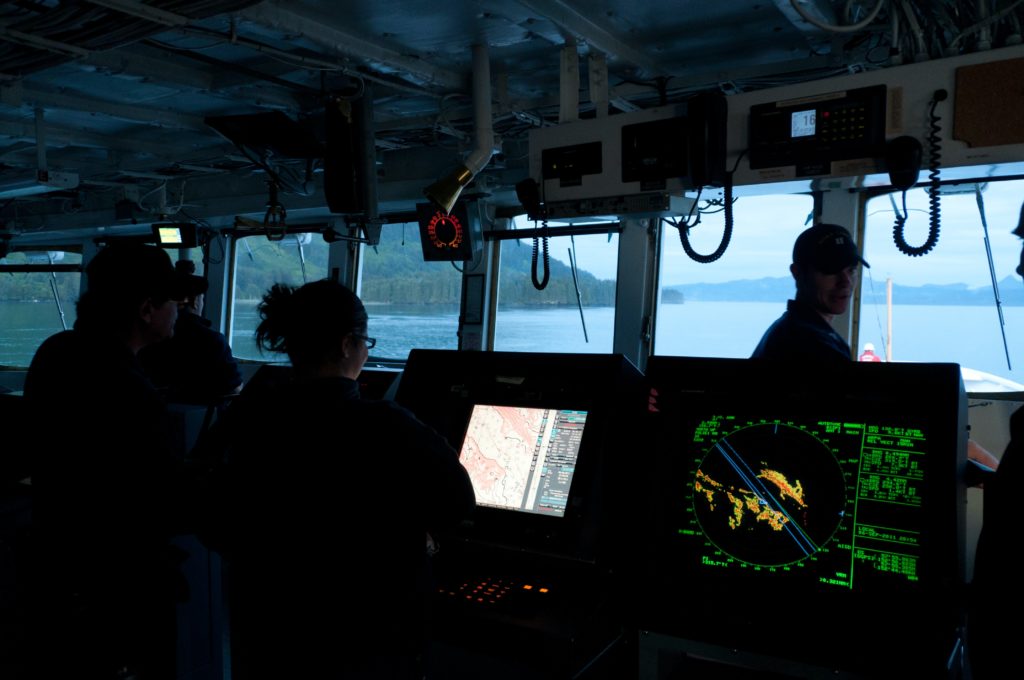Project Insights Report
Development of Canada’s National Occupational Standards for a Sustainable Blue Economy
 Executive Summary
Executive Summary
Canada boasts the world’s largest coastline; however, its ocean-related industries contribute only 1% to the GDP, significantly trailing behind other nations. This project identified a pressing need for specialized training in science, technology, engineering and mathematics (STEM) to bridge the skills gap in ocean-related occupations in the sustainable blue economy (SBE), including marine transport and ocean technology.
Interviews and surveys with stakeholders across six sub-sectors revealed 15 rapidly growing occupations essential for the sustainability of oceans. However, challenges such as low ocean literacy, high competition for STEM graduates, and rising housing costs due to increased demand during the pandemic pose significant barriers to attracting and retaining talent. Advanced technologies like artificial intelligence are reshaping operational frameworks, necessitating a workforce adept in these new systems. The project also highlighted the importance of advancing equity, diversity and inclusion within a traditionally homogeneous workforce to foster innovation and growth.
This project is crucial for policy-makers and educational institutions focusing on labour markets and economic development. By aligning training programs with industry needs, Canada can better prepare its workforce for future opportunities within the SBE. Additionally, efforts by organizations like Ocean Allies to improve equity, diversity and inclusion could serve as a model for other sectors, enriching the pool of ideas and driving sustainable growth. The project’s comprehensive approach provides a road map for integrating technology, sustainability and inclusivity into workforce development strategies across various sectors.
Key Insights
Significant barriers to attracting talent to the SBE include low ocean literacy and general interest in the sector within Canada, despite the notable demand for skills in STEM.
The project highlighted a small but significant labour gap in the SBE, particularly in STEM areas and fish- and seafood-processing roles, with automation posing both opportunities for skilled engineers and risks for those requiring upskilling or re-skilling.
The development of National Occupational Standards and competency profiles not only facilitates targeted training but also supports the broader goal of workforce readiness in sectors pivotal to national economic growth and sustainability.
 The Issue
The Issue
Canada boasts the world’s longest coastline. It is surrounded by three major oceans, which uniquely positions it to lead in the SBE. However, despite this geographical advantage, Canada’s contribution to the GDP from ocean-related industries significantly lags behind that of other nations. For instance, while countries like Norway see a 25% GDP contribution from similar sectors, Canada’s stands at a mere 1%, which is starkly lower than the 2% to 5% average observed across Organisation for Economic Co-operation and Development members. This underperformance highlights a missed opportunity in harnessing the full economic potential of Canada’s vast coastal resources.
Historically, the Canadian blue economy has faced challenges in workforce development, particularly in transitioning existing workers to meet the technical demands of emerging ocean-related occupations. The skill sets required are often highly specialized, and the existing workforce in coastal areas predominantly occupies lower-skilled roles. This skills mismatch has been a significant barrier, preventing effective capitalization on new job opportunities created by the sector’s growth. Fisheries and Oceans Canada has projected about 350,000 new jobs emerging from this sector, emphasizing the urgent need for targeted training and development programs to adequately prepare the workforce.
Previous efforts to address these challenges have been fragmented and insufficiently coordinated, lacking a comprehensive strategy that aligns with the rapid advancements and specific needs of the blue economy. The absence of a unified approach has led to reactive rather than proactive responses to labour market demands, further exacerbating the skill gaps. This backdrop sets the stage for a strategic intervention aimed at developing a robust framework to streamline and enhance workforce readiness across Canada’s blue economy. This would ensure the nation could finally leverage its natural maritime assets to foster sustainable economic growth and global leadership in ocean-related industries.

 What We Investigated
What We Investigated
The project set out to identify and describe the specific skill sets required for workers in ocean-related occupations to adapt and thrive in SBE-related sectors. The research questions guiding the project centred on understanding current and future workforce requirements, the impact of automation and the necessary transitions for workers to remain competitive in evolving coastal economies.
The project involved a collaboration with industry professionals, academic institutions and organizations in Atlantic Canada. These partnerships were crucial in gathering diverse insights and ensuring the relevance of the occupational standards developed.
The project’s objectives were multi-faceted, focusing on the development of National Occupational Standards and competency profiles. These tools were intended to aid in training, skills recognition and the facilitation of effective workforce transitions. To achieve these goals, the project team conducted 43 interviews with individuals from 33 organizations across six sub-sectors of the SBE, including fisheries, ocean technologies and aquaculture. Additionally, project coordinators gathered survey responses from 170 workers to further inform the competency profiles.
The methodology adopted for this investigation included a combination of interviews and surveys, and a comprehensive literature review. This approach provided a robust framework for understanding the intricate dynamics of the SBE sector and the specific needs of its workforce.
By leveraging this stakeholder-driven approach, the project not only aimed to map out essential skills but also to foster a deeper understanding of the sector’s trajectory and the strategic actions required to support a sustainable workforce transition.
 What We’re Learning
What We’re Learning
The project successfully identified 15 rapidly growing occupations that are pivotal to the social and environmental sustainability of oceans and ocean communities. These roles span diverse fields such as marine transport, ocean technology and marine tourism, among others. The project developed and shared six competency profiles for marine geologists, marine geophysicists, hydrographers, geotechnical engineers, electrical engineers and commercial divers.
Barriers to attracting talent are interwoven and complex
A key finding from the project was that ocean literacy and general interest in the oceans sector within Canada are low. This has been identified as a major hurdle in attracting talent to the SBE. Despite this, there is notable demand for skills in STEM, with specific emphasis on roles like scientists, data analysts and engineers. The project also highlighted the increasing adoption of advanced technologies such as artificial intelligence and remote telemetry, which are reshaping traditional operational frameworks within the sector. The project underscored several barriers that hinder the entry of talent into the SBE. These include high competition for STEM graduates; additional certification requirements; and geographical isolation, which necessitates living in rural areas. Additionally, as Canadians relocated to coastal areas during the pandemic, affordable housing grew scarcer due to heightened demand on an already limited housing inventory. This shift presents a fresh challenge for recruitment and retention on the East Coast, where wages struggle to match the rising cost of living. These factors collectively contribute to a challenging environment for recruitment and retention in the SBE.
The largely homogeneous workforce would benefit from increased equity, diversity and inclusion
Efforts by organizations like Ocean Allies and Canada’s Ocean Supercluster are improving equity, diversity and inclusion within the sector. This is crucial, as the sector has traditionally been dominated by a demographic that is predominantly white and male. Increasing diversity is seen as a pathway to fostering innovation and growth within the SBE.
Automation, demand for sustainability, and regulatory changes are creating employment gaps and risks
There is a small but significant labour gap in the SBE, particularly in STEM areas and fish- and seafood-processing roles. The trend toward automation is both an opportunity for skilled engineers and a potential risk for workers in other positions who may require upskilling or re-skilling. There is a growing demand for roles related to environmental sustainability, including positions like environmental compliance officers and engineers specializing in sustainable practices. The project also brought to light several occupations that are at risk due to automation and regulatory changes. For instance, fish-plant workers are facing job disruptions due to increased automation and stringent pandemic-related safety measures. Similarly, on-site workers are seeing a shift toward remote operations, which could potentially impact job opportunities in coastal and remote communities.
 Why It Matters
Why It Matters
The insights gleaned from this project underscore the critical need for targeted skills development and strategic workforce planning in emerging sectors like the SBE. These findings are particularly relevant for policy-makers and practitioners focused on economic development, labour markets and education. They highlight the necessity of aligning educational programs and workforce training with the specific needs of industries undergoing rapid technological and environmental transformations.
The development of National Occupational Standards and competency profiles for the SBE not only facilitates targeted training but also supports the broader goal of workforce readiness in sectors that are pivotal to national economic growth and sustainability. This approach can serve as a model for other sectors where technological advancements and sustainability goals are driving changes in job requirements and competencies.
For policy-makers, the project’s outcomes emphasize the importance of investing in sector-specific education and training programs. Such investments can bridge the gap between current workforce capabilities and the evolving demands of industries like the SBE. Additionally, these findings can inform the development of policies that support sector-specific career pathways, making it easier for individuals to enter and thrive in these fields.
Practitioners in workforce development and educational institutions can draw on these insights to design programs that are closely aligned with industry needs. This alignment is crucial for ensuring that training programs provide participants with the skills that are in high demand, thereby enhancing job readiness and employability.
Moreover, the project’s focus on equity, diversity and inclusion within the SBE workforce presents a valuable framework for other sectors. Efforts to increase diversity not only contribute to a more inclusive economy but also enrich the pool of ideas and innovations necessary for sustainable growth. This aspect of the project highlights the dual benefits of diversity initiatives: they contribute to social equity and drive economic performance by introducing a broader range of perspectives and solutions.
The lessons from this project extend beyond the immediate context of the SBE. They provide a road map for integrating sustainability, technology and inclusivity into workforce development strategies across various sectors. By focusing on the specific skills and competencies required by emerging industries, policy-makers and practitioners can better prepare the workforce for future challenges and opportunities, ensuring that economic development is both robust and sustainable.
 What’s Next
What’s Next
Eco Canada continues its knowledge mobilization efforts on the competency profiles developed and opportunities within the SBE. The organization hosted the Sustainable Blue Economy Summit and offers a virtual course that introduces the sector and its possibilities. Eco Canada continues to support stakeholders to use the competency profiles to develop training programs, new curricula, skills recognition programs, certifications and professional designations. The Future Skills Centre continues to support Eco Canada in the next phase of work, developing a skills certification framework and assessing its integration and impact with employers in the blue economy.
Have questions about our work? Do you need access to a report in English or French? Please contact communications@fsc-ccf.ca.
More from FSC
The burden of care: Addressing challenges in employment in the nonprofit sector
Right Brain, Left Brain, AI Brain: Implications of AI on Jobs and Skills Demand in Canada
Social and Emotional Skills
How to Cite This Report
Richter, S. (2025). Project Insights Report: Development of Canada’s National Occupational Standards for a Sustainable Blue Economy. Toronto: Future Skills Centre. https://fsc-ccf.ca/projects/standards-sustainable-blue-economy/
Development of Canada’s National Occupational Standards for a Sustainable Blue Economy is funded by the Government of Canada’s Future Skills Program. The opinions and interpretations in this publication are those of the author and do not necessarily reflect those of the Government of Canada.




